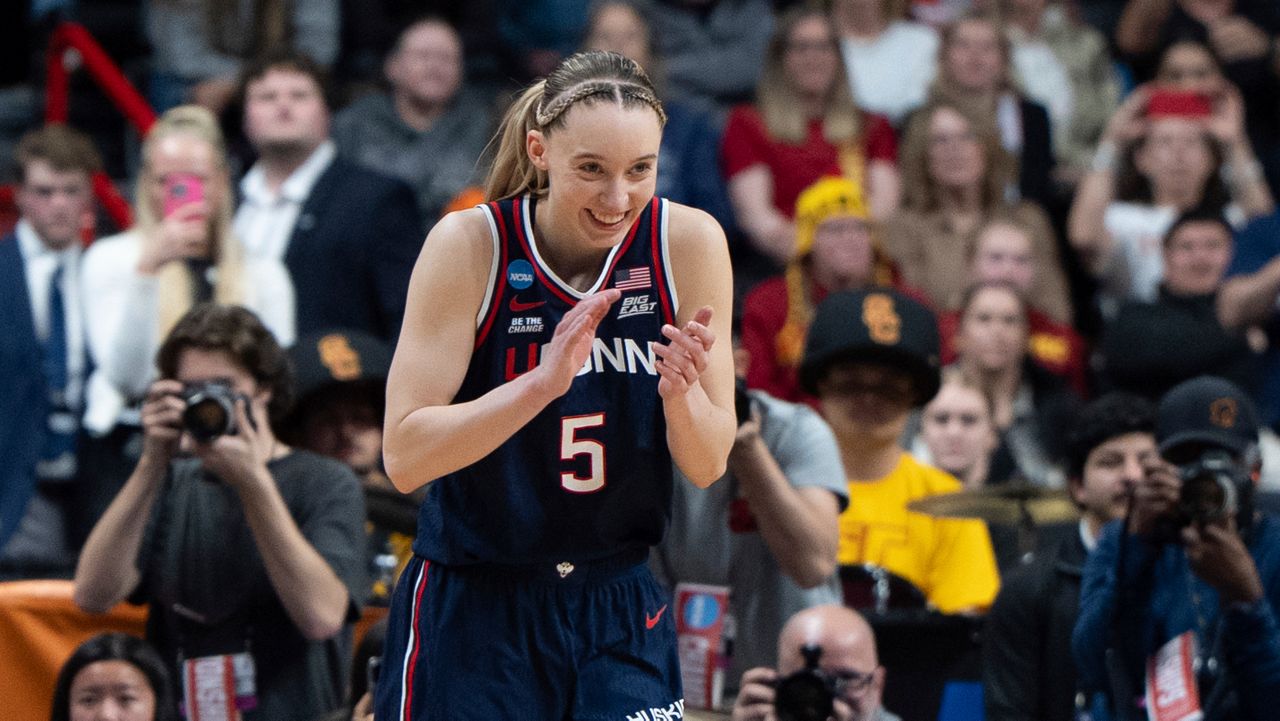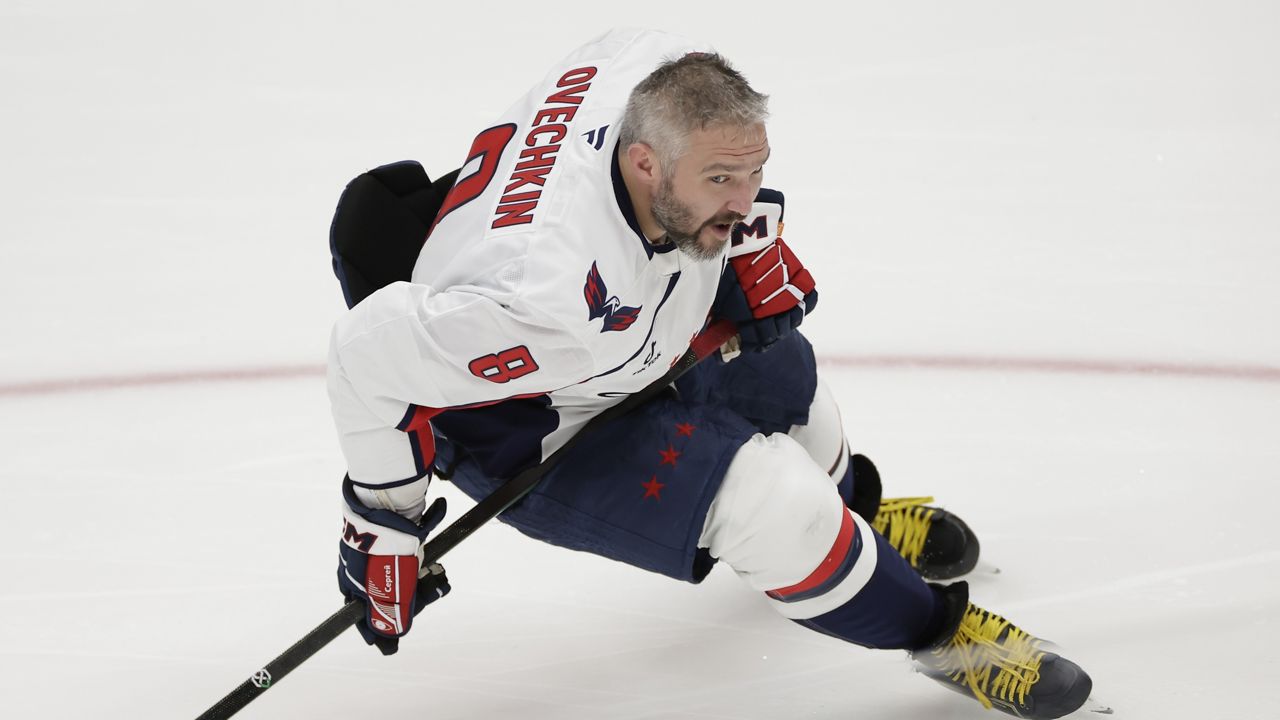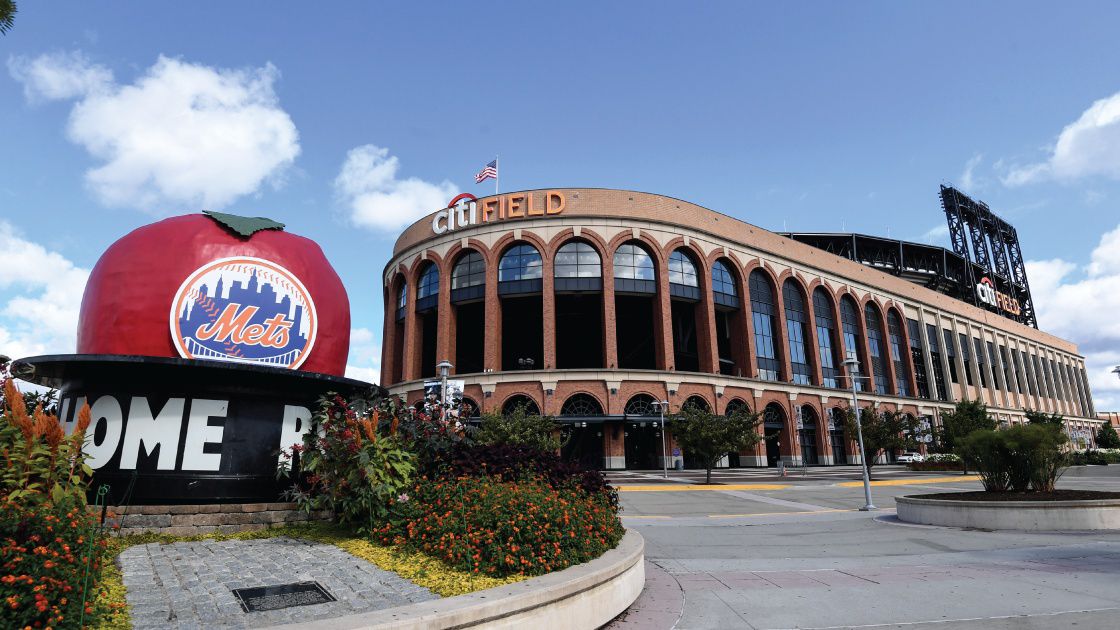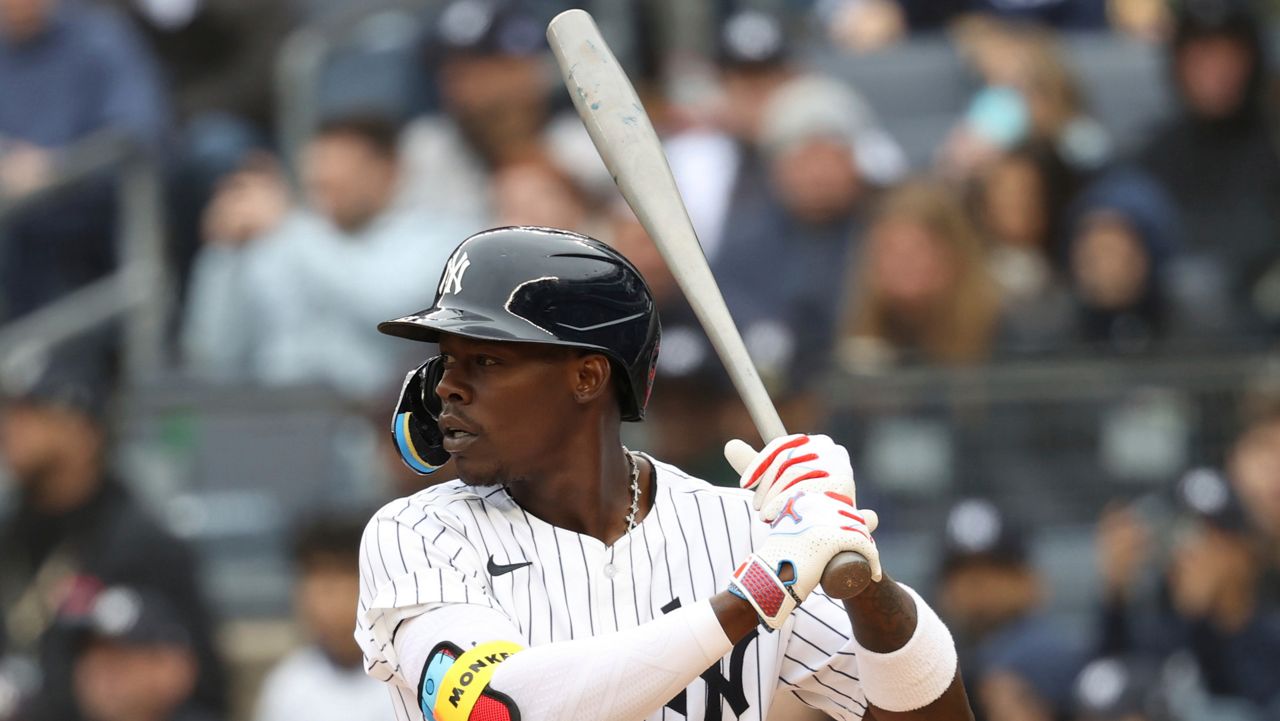Caleb Williamson did not know what hockey was until he watched “The Mighty Ducks" as a child.
“I saw the movie and asked my parents, ‘what sport is that?’” the youth hockey advocate said. “They said ‘that’s hockey,’ and that is when my parents and I started researching it.”
He said stories like his are common, particularly among children of color who miss out on trying hockey because they are not exposed to it.
“If your parents did not grow up as hockey fans, you may not know what hockey is,” Williamson said. “That is one thing that makes it so hard to learn about the sport at an earlier age.”
Data provided by the NHL to NY1 showed there are 54 known Black, Indigenous, and people of color who played at least one game this season as of April 20.
Behind the bench, there has only been one Black NHL head coach — Dirk Graham of the Chicago Blackhawks — out of 387 coaches in the league’s 104-year existence.
Williamson, a recent graduate of Syracuse University College of Law, is one person trying to help increase diversity at the rink in New York City and make sure hockey truly is for everyone.
As the diversity and inclusion coordinator for the New York State Amateur Hockey Association, he connects local charities with funding and tools they need to expose underprivileged youth to the sport. He thinks that the government can help his cause, too.
“Getting hockey in [New York City] parks is so important,” Williamson said. “City Parks Foundation offers free programs in tennis, golf and baseball, but usually not in hockey. If there is a very serious effort on the part of legislators to grow the sport, that would be amazing.”
Williamson said a partnership could start with street hockey, which is played on parking lots, streets, tennis courts or other asphalt surfaces.
“Wherever you have any sort of asphalt, you can put up a net and sticks and engage with the sport,” Williamson said. "All forms of hockey were featured in ‘The Mighty Ducks’ movie. That is something cities and other organizations can adopt."
Mercedes Narcisse, a councilwoman representing the 46th District in Brooklyn, is one legislator who has an interest in bringing more hockey to New York City.
“Diversity is very good for any sport. If we have the opportunity to get more hockey in our district, we will do it,” Narcisse said. “The 46th District has a hockey rink, but we need to push it more. You never know which sport a kid will become attached to.”
Narcisse described the benefits of children playing hockey and sports in general, including less time and energy for violence.
“When children are busy, they don’t have time to cause trouble,” Narcisse said. “To put it simply, they get tired, and they do not have energy for gangs.”
Shekar Krishnan, chair of the New York City Council Committee on Parks and Recreation, shared a similar sentiment. He said the lack of parks is a “community safety issue” that unfairly impacts children of color.
“On average, Black and Latino students [in New York City] attend schools with about 10 fewer teams on average compared to white students,” Krishnan said. “That is a huge inequity that needs to be addressed.”
Krishnan is a councilman representing the 25th District in Jackson Heights, which he said ranks 50th out of the 51 New York City districts in green space per capita. He is pushing for $1 billion in funding for the Committee on Parks and Recreation, which will “make sure everyone has access to parks.”
The current city budget allocates 0.57% to city parks, less than it did during the 1970s at the heights of the Big Apple’s fiscal crisis, Krishnan said. With more “crucial” funding, he thinks there can be more hockey across all five boroughs.
Ice Hockey in Harlem is one organization trying to make that happen. It was founded in 1987 when 40 children agreed to attend weekly classroom sessions and skate one night a week. They were taught math, reading and geography, using hockey as a teaching tool.
Three decades later, the group continues to help Harlem’s youth on and off the ice through education and coaching.
Program director Malik Garvin said the goal of the organization “is not to create the next Wayne Gretzky, but create better people.”
“While hockey is a part of what we do, there’s more to it,” Garvin said.
Garvin himself was a part of Ice Hockey in Harlem as a child, which helped him get equipment, learn the game and even navigate racism he faced on the ice.
“The first time I was called the n-word while playing ice hockey, I was 8 years old,” Garvin said. “That’s kind of your worst fear going out there.”
Ice Hockey in Harlem provided Garvin a safe place to play hockey in Manhattan — a city with a population of over 1.5 million, but just four hockey rinks.
Sky Rink at Chelsea Piers is home to the NYC Cyclones, New York City's premier youth hockey organization. For a long time, Sky Rink was the only fully-equipped place to play travel hockey in Manhattan, Garvin said.
Lasker Rink is a seasonal ice skating rink located in Central Park. Garvin said it will be “a gravel pit” for the next few years — it has been knocked down and will return in 2024 as part of the Harlem Meer Center.
Riverbank State Park has a covered skating rink for roller skating in the summer and ice skating in the winter. The rink is located in Harlem.
Wollman Rink is a big oval skating rink with no glass. Children can play hockey at the Central Park rink if they are separated by foam dividers, but this prevents them from lifting the puck — a reason why Garvin emphasized that the rink is “not made for hockey in any way shape or form.”
“That is what makes it so hard to play hockey in Manhattan: the lack of rinks,” Garvin said. “It is a limiting factor for ice hockey in New York City.”
Added Krishnan: “The inaccessibility of skating rinks and ice rinks is a big issue. This directly has an impact on who can play in sports. You shouldn't have to travel to Chelsea Piers [in Manhattan] to be able to play hockey.”
“When we think about diversity in sports, we have to reduce the barrier for entry."
Price is another factor why hockey is difficult to learn. It is one of the most expensive sports a child can play — equipment and ice time aren’t cheap.
Utah State University and the Aspen Institute reported in 2019 that parents with a child who plays ice hockey spent an average of $2,583 per year. Ice hockey was the most expensive sport among the 21 evaluated.
To combat the lack of rinks and expensive prices, Ice Hockey in Harlem works with other organizations, sharing resources and information to get as many children playing as possible.
The 43 OAK Foundation, founded by entrepreneur Sean Grevy, works with players — some from charities like Ice Hockey in Harlem — who want to take their skills to the next level.
“Ice Hockey in Harlem gets as many kids as possible on the ice to see if they like hockey,” Grevy said. “Our goal is to help the kids that love hockey. We want to create a bridge, so kids don’t feel stuck. If we don’t exist, that bridge does not exist, and you cannot cross over the river without that bridge.”
Lance Spencer, for example, learned to skate at Ice Hockey in Harlem. When money was getting tight, Grevy and the 43 Oak Foundation stepped up, keeping Spencer’s youth hockey career going.
Romeo Torain also quickly rose through the ranks, balancing a promising hockey career with academics. The Washington Heights native is now attending Castleton University, and appeared in 20 games for the Spartans in his freshman season.
“Ice Hockey in Harlem can only do so much. Those guys are working their tails off,” Grevy said. “We need to continue to have unity between programs, so politics and finances do not end a career.”
UBS, the New York Islanders and UBS Arena are doing their part to make sure Grevy’s impact can keep growing. They committed $1 million over five years to the 43 Oak Foundation, money that is helping players pursue college and professional hockey careers through scholarships and mentorship programs.
“Our partnership with the Islanders is not just important, but essential,” Grevy said. “They are not just a brand that throws money at something. They really care. It’s the truth, and I mean it from the bottom of my heart.”
The 43 Oak Foundation hosted its second clinic with the Islanders in February at UBS Arena. It doubled the attendance of their first clinic — more than 40 kids from across the country participated, 30 of whom were under the age of 18.
Torain even returned to New York for the clinic, instructing younger players who seek to replicate his path.
“For kids to have someone like [Torain] as a coach, who is a Black hockey player from Harlem playing NCAA hockey and getting a degree, they're like, ‘oh my God,’” Grevy said.
For students who want to play sports other than hockey, there are organizations that can help them, too.
Youth Sports Partners, for example, supports disadvantaged students through college readiness, career development, financial literacy and health education.
Oren Wilson, the group’s director of operations, other sports are cheaper and easier to access than hockey.
“I work with one student who plays hockey,” Wilson said. “There are no teams in the lower-income areas. The kids don't see people of their color playing it.”
Wilson played football collegiately for Michigan State University and the University of Akron, and briefly played for the New York Giants after graduation.
He shared that no matter which sport children play, simply getting involved can help in many different ways.
“Sports, to me, have no color. Sports should be diverse. Sports opened my eyes and showed me different cultures,” Wilson said.








